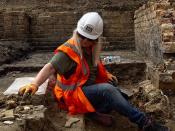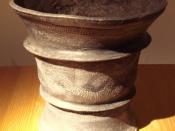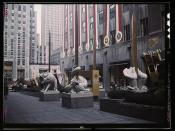FINISHING THE PUZZLE: A LOOK INTO THE WORLD OF ASIAN ARCHEOLOGY
Knowing our history is important to every one of us as it takes us beyond the natural realm of how and where we live, and allows us to view our world in a different light. Archaeologists are trained professionals who devote enormous amounts of time to figuring out the unanswered questions of our reality in relation to our past. They do this through studying archaeological sites and their contents, and applying this information to form enlightening theories and appropriate justifications. This essay will outline two Asian archaeological sites and identify what major influence they have had on our understanding of Asian Prehistory and what questions have been raised as a result of work on these sights. In addition, it will primarily focus on the physical archaeological evidence that has been obtained for each site and how this evidence has contributed to interpretations of each site and what gaps have been presented in this evidence.
Ban Chiang is an archaeological site discovered in 1966 and is situated in Udon Thani Province, Thailiand, dated from third century BC to third century AD. This site became extremely popular and attracted massive publicity due its red painted pottery. When excavating Ban Chiang, archaeologists had discovered quite a variety of artifacts and materials in their field study. The objects included human skeletons, animal bone, metal, charcoal, soil and more importantly pottery. However, in relation to the gaps regarding the physical evidence sorted in Ban Chiang, "some of these materials have been thoroughly analysed, such as the crucibles, others, such as the rollers, contain mysteries still unsolved" (The Ban Chiang Project, 2007). It is perhaps evident then that there are still questions surrounding the inorganic evidence gathered in Ban Chiang. Archaeologists may...


